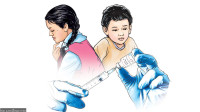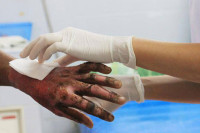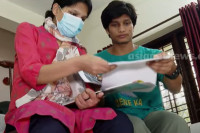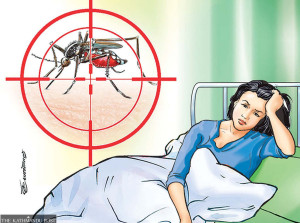Health
Deaths of Bajhang mum and newborn expose cracks in maternal health system
Complications were diagnosed at a local health post, but cost concerns and lack of awareness led to home delivery.
Arjun Poudel
By the time health workers from Rayal Primary Health Care Centre in Bajhang arrived at the home in Kedarsyu Rural Municipality where a 21-year-old woman had given birth to her baby a few days ago, the newborn had already died. They found no vital signs in the mother, either.
“Early on Monday morning, we brought the mother to the health facility to save her, but she too died before reaching the facility,” Mahendra Chand, a senior auxiliary health worker serving at the health centre, told the Post over the phone from Bajhang. “Due to the delay in bringing her to the health facility, both the mother and newborn died.”
Health workers, as well as representatives of the rural municipality, told the Post that the village where the deaths happened is five kilometres from the nearby birthing centre and the real causes of death of the mother and newborn were something different.
Abject poverty, lack of awareness about free health services, and negligence on the part of local health workers, family members, and the local government were among the reasons for the death of the mother and her baby, according to them.
“Two days before the incident, the health facility where the woman sought pregnancy tests had diagnosed complications,” said Chand. “The woman had complained about back pain, but the attending health worker advised her to seek delivery at the district hospital if the pain worsened.”
The woman’s husband was in India for employment, and her mother-in-law took the problem lightly, according to them
“Due to the concern over expenses, the woman’s in-laws opted for a home delivery,” said Amar Bahadur Bhandari, chair of ward 1 of the rural municipality. “Even though an ambulance can reach the woman’s house and local transport was also available, they chose home delivery, which is unfortunate.”
Since the government introduced free institutional delivery services at all state-run health facilities in 2009, more than 2,800 birthing centres have opened across the country. The institutional delivery rate, which was around 18 percent then, has now increased to an average of around 81 percent. However, far-flung areas like Bajhang have only around 50 percent institutional delivery rate.
Nepal cut the maternal mortality rate from 539 per 100,000 births in 1996 to 239 per 100,000 births in 2016, and the country even received a Millennium Development Goals award for the progress.
A study on maternal mortality carried out by the National Statistics Office in 2021 showed that for every 100,000 live births, 151 women still die from maternity-related complications.

Maternal death rate and home delivery rate are still high in remote areas.
“Unfortunately, a new mother and her baby died simply because her family feared the costs needed for a safe delivery,” said Dr Aruna Karki, a maternal health expert. “This is a matter of shame for the relevant agencies, including all three tiers of government—federal, provincial, and local—and for all of us.”
Experts say health agencies must monitor the health conditions of pregnant women, counsel them on possible risks, and ensure access to free services provided by the government.
They also cite lack of awareness as a major reason behind the deaths of the woman and her newborn.
“I call it a collective failure of all concerned agencies,” said Dr Sudha Sharma, former health secretary, who is also a maternal health expert. “This incident shows the importance of a multi-sectoral approach—involving both communication and education—for reducing maternal and neonatal deaths.”
Officials at the health ministry admit lack of awareness about free services provided by the government is the main reason for the deaths in Bajhang.
“The government provides a Rs3,000 travel allowance, which is more than enough to get to a nearby hospital. Health facilities also offer free ambulance services if women in labour need to be sent to other hospitals. Plus, we have the President’s air rescue programme for such purposes,” said Nisha Joshi, a senior public health officer at the Family Welfare Division under the Department of Health Services.
“Moreover, the government provides allowances for antenatal visits so that potential risks can be identified in advance. Despite all these arrangements, women are still dying.”
According to the Health Ministry, at least 191 women from 51 districts died of delivery-related complications in the fiscal year 2023-24.
Nepal’s target under the UN’s Sustainable Development Goals is to reduce the maternal mortality rate to 75 per 100,000 births by 2030.




 18.12°C Kathmandu
18.12°C Kathmandu














